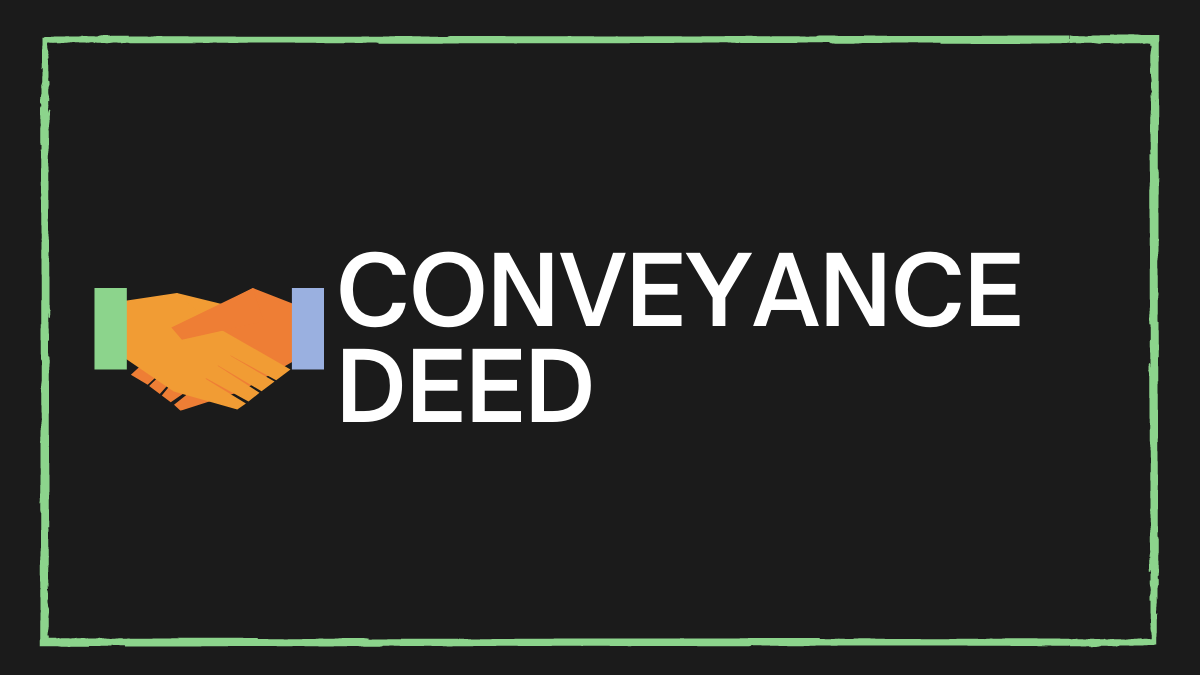
The Cambridge Dictionary defines ‘Conveyance’ as a legal document that grants land or property rights to someone. And if you look for the term ‘Deed’ in the same dictionary, you will realize that it is an instrument that serves as proof of land ownership. Therefore, a Conveyance Deed is a legal document through which property rights are transferred from an owner to a homebuyer.
Without this record, you cannot acquire any real estate asset. Considering the importance of documents such as the encumbrance certificates or a Conveyance Deed in the selling and purchase of land, here is a blog that sheds light on what the CD entails, its broad types, applications procedure, and the documents required.
What Does the Document Entail?
A conveyance deed is an essential document to prove that the ownership of land or a property has been transferred to you. The routes can be different, say exchange, sale, relinquishment, etc; however, the contents of a CD are almost the same. The points listed below sheds light on what a CD entails:
- Area and boundary of the property concerned.
- Property specifications such as the plot or house number.
- The method through which the property/land is delivered.
- A memo that explains how the property has been received.
- The date on which the real estate asset will be handed over to the owner.
- Details specifying that the asset is free from legal encumbrance.
- Details of Both the parties i.e. seller and buyer.
- Signature of both transferor and transferee.
- Terms and conditions, if applicable.
- Title chain
What is the Significance of the Conveyance Deed?
Drafted on a non-judicial stamp paper and regulated by the provisions of the Registration Act (1908), a conveyance deed is one of the most important property documents. It is required to complete the process of sale and purchase of land or property. If you are not in possession of a CD, you will be unable to perform the activities listed below:
- You cannot be declared the owner of a property
- In the absence of a conveyance deed, you will be unable to renovate your real estate asset without the permission of the property owner.
- The property concerned will not be registered with the government authorities.
- You will have no guarantee of whether the land or property concerned is free from any legal encumbrance.
What are the Types of Conveyance Deed?
As discussed, the conveyance deed is a broad term that enumerates the different types of methods for owning a real estate asset. Given below are the 5 broad categories of CD that you must be aware of.
| Deed | Definition |
| Sale Deed | A legal document that confirms the transfer of a property from a seller to a buyer is called a sale deed. |
| Gift Deed | Through gift deeds, the ownership of a real estate asset can be transferred without monetary exchange. |
| Relinquishment Deed | Co-owners of a property can give up their property rights and transfer its ownership to another co-owner. This is possible through a relinquishment deed. |
| Deemed Conveyance | A deemed conveyance is granted by a competent authority to property owners of housing societies. This occurs when a project developer fails to furnish the document within 4 months. |
| Mortgage Deed | If you apply for a bank loan by keeping your real estate asset as collateral, then you will be issued a deed of mortgage. |
How is Conveyance Deed Different from a Sale Deed?
Conveyance deed is a broad term that constitutes different types of property ownership methods. This includes, but is not restricted to sale, relinquishment, mortgage, or an exchange deed. A sale deed, on the contrary, is a type of conveyance deed which is issued upon selling a property. Hence, all sale deeds are conveyance deeds but it is not the other way round.
Conveyance Deed Registration Process and Documents
The first step in obtaining a conveyance deed is to draft the content on a non-judicial stamp paper. Post this, you have to submit the deed at the Sub-Registrar’s Office. Once the document is registered, you will have to submit the registration and stamp duty charges. It is important to note that stamp duty and registration fees vary from one state to another.
Enlisted are the documents which are required for obtaining a CD:
- Registration form
- Fee Receipt
- Sale agreement
- PAN Card details
- Passport size photographs
- ID proof all the parties involved
- Original documents with photocopies
Note: For obtaining conveyance deeds for housing societies, the documents are different. For example, architect certificate, society registration certificate, etc.
Important Takeaways
Now that you have got a comprehensive overview of a conveyance deed, here are a few points that you must remember before signing the document:
- A sale deed is executed post a property sale agreement.
- The deed is registered at the Sub-Registrar’s Office.
- At least 2 witnesses have to sign the conveyance deed.
- You can also verify the property details from the registrar’s office.
- It is mandatory to furnish all the original property documents in the registrar’s office within 4 months from the execution of the agreement.
Hence, like other real estate documents, a conveyance deed is also important for purchasing a property. Without this, it will become difficult for you to register the concerned property with government authorities. 4 months after the deed is signed, all property documents have to be submitted at the registrar’s office.

![Well, #GrowWithPropacity is here to educate you all about all things Real Estate.
Follow to stay updated in Real Estate!
[Real Estate, Construction, Real Estate Tips, Real Estate Growth, Real Estate Industry, Carpet Area, Super Area, Built Up Area, Home Buying Tips, Home Buyers, Property]](https://propacity.com/blogs/wp-content/plugins/instagram-feed/img/placeholder.png)
Leave a Reply